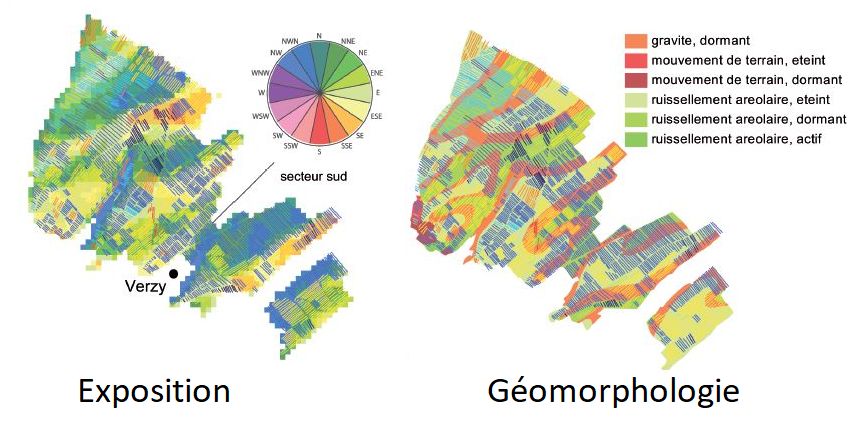Designation (ladder of growths) for the classification of vineyards in the French wine-growing region of Champagne. In contrast to the Bordeaux or Burgundy classification, this does not apply to specific vineyards or sites, but to communes. This means that all vineyards located there are classified. It began in the 18th century, when individual sites were ranked according to quality in order to determine grape prices. It is said that the distance of the vineyard from the press house was the original decision criterion. The shorter the distance to the press after the grape harvest, the fresher the grapes and therefore the higher the classification. At the beginning of the 20th century, the Champagne houses exerted great pressure on the many small grape suppliers due to oversupply. In the process, the authorised buyers also used questionable practices, including intimidation and bribery, to achieve low prices. At that time, prices ranged from 50 to 100% and only 12 communes were awarded 100% Grand Cru status.

Legal conditions
Finally, in 1920, the "Echelle des Crus Champenois" classification system was introduced. It was based on soil composition, microclimate, exposure (sunlight), slope inclination, wind situation, grape variety and age of the vines. Every year, the winegrowers and champagne houses, coordinated by the CIVC authority, set the price for the Grand Cru grapes from 17 communes at 100%. All other grape prices are calculated on a percentage basis. This was 90 to 99% for the 42 Premier Cru communes and 80 to 89% for the remaining 261 communes (see list under Champagne). Since the early 2000s, pricing has been left to the market, although the Échelle des crus system still serves as a guide. According to the CIVC, the reason for this was to avoid potential conflicts with EU law. In 2019, the price for Grand Cru grapes per kg was 5.70 to 6.86 euros.
Further information
For the production of alcoholic beverages, see Champagne (sparkling wines), Distillation (distillates), Speciality wines, Spirits (types), Winemaking (wines and wine types) and Wine law (wine law issues).
Sources: ChampagnerWorld and Champagner&Champagne
Graphic: Kedge Business School
Voices of our members

Using the encyclopaedia is not only time-saving, but also extremely convenient. What's more, the information is always up to date.
Markus J. Eser
Weinakademiker und Herausgeber „Der Weinkalender“